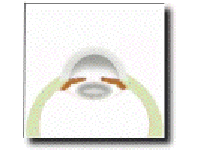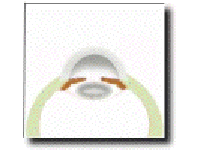|
|
 |
 |
 |
 |
|
|
LASIK - Laser Surgery for Nearsightedness
|
Printer Friendly
|



Yichieh Shiuey, MD Massachusetts Eye and Ear Infirmary, Harvard Medical School January 13, 2003
|
What is LASIK?
LASIK stands for Laser In-situ Keratomileusis, one of the two methods available in the United States to correct nearsightedness with laser surgery. The other method to correct nearsightedness with laser surgery is PRK
How do you decide if LASIK is for you?
First, of all it is important to realize that glasses and contact lenses work very well to correct vision with many people achieving 20/20 vision by wearing glasses or contact lenses. However, some people do not like the appearance of glasses or are limited in their activities. For example, it is not possible to go snorkeling while wearing glasses. Other people with nearsightedness may want to wear contact lenses, but may be unable to because of recurrent eye irritation with contact lens use. If you do not like to wear glasses and you are unable to comfortably wear contact lenses, LASIK may be for you. Before you undergo LASIK your ophthalmologist will also take special pictures of your eye using a technique called corneal topography to verify that you are a good candidate for the procedure.
What happens during LASIK?
Before LASIK, you are given anesthetic eye-drops to make you comfortable. During the procedure itself you will be lying back in a mechanized chair, similar to that found in a dentist's office. A small suction device is used to keep your eye still during the procedure. See Figure 1.
A microsurgical instrument called a microkeratome is then used to make a thin flap in the cornea. This corneal flap remains attached at one side. You may feel a sense of pressure in your eye during this step. See Figure 2.
You will be asked to look at a light in ORDER to center your eye for laser treatment. A special type of laser (excimer) is then used to reshape the cornea underneath the corneal flap. You will hear some noise FROM the laser instrument as it performs this procedure. The laser process usually takes less than one minute. See Figure 3.
The flap is then laid back down and allowed to set in place for approximately 5 minutes. The flap stays in place because of natural water pressure, so no sutures are necessary. The entire LASIK procedure usually takes less than 10 minutes per eye. See Figure 4.
What happens after LASIK?
After LASIK you will be given several types of eyedrops. You will also need to return for followup visits within several days and then within several weeks. The day of the procedure, you should arrange for a ride home, because you may not see well enough to drive immediately after surgery. Wearing sunglasses will help make your eye feel more comfortable as it completes its healing. Most people are able to notice substantial improvement in their vision within several days to several weeks after the surgery.
How do I find out more about LASIK?
To find out more about LASIK, contact an ophthalmologist (M.D.), who is a refractive surgery specialist near you. In the New England area, contact Dimitri Azar, MD, Director of Cornea and Refractive Surgery, Harvard Medical School Department of Ophthalmology, Massachusetts Eye and Ear Infirmary. You may call (617) 573-3938 to make an appointment. | |
 Figure 1
Figure 1
|
|
 Figure 2
Figure 2
|
|
 Figure 3
Figure 3
|
|
 Figure 4
Figure 4
|
|
|
The information and recommendations appearing on these pages
are informational only and is not intended to be a basis for diagnosis, treatment
or any other clinical application. For specific information concerning your personal
medical condition, the DJO suggests that you consult your physician.
|
|
 |
 |
 |

|
|
 Welcome, please sign in
Welcome, please sign in  Welcome, please sign in
Welcome, please sign in